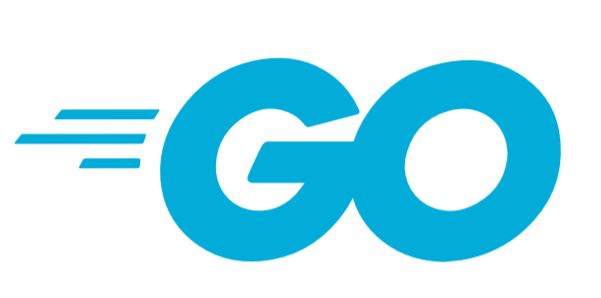Consuming an API with the Go Programming Language
Posted on July 23rd, 2019

Go (a.k.a. Golang) is a programming language typically used in server-side scenarios. It was created at Google to take advantage of multicore processor architectures, advances in networking, and the emergence of Cloud Computing. Its architecture, simplicity, fast build-times, and fast execution make it ideal to build applications that run in distributed environments. This of course also makes it ideal for API-based applications.
The creators of the language, Rob Pike, Robert Griesemer, and Ken Thompson, also helped create the C programming language, Unix, and UTF-8 (the world's most popular encoding scheme). The language's pedigree lended credibility out of the gate and enabled its subsequent successful adoption starting with its first official release in 2012. Its market momentum, compiled executables for a long list of operating systems, static typing, simplicity (including well thought-out package management), and its thriving community has helped it become popular vis-a-vis dated languages such as PHP and Ruby. It also competes successfully against Python and NodeJS, other popular modern server-side languages. It is in heavy use at Google, as parts of Youtube and the Google application itself have been rewritten in the language. Other popular applications such as Docker and Kubernetes are also written in Go, as well as serving as the backbone of many major commercial sites
If you have not yet tried Go, it is easy to download and install at golang.org
In this blog, we will take a look at consuming an API using Go. Naturally, we will be using one of Interzoid's APIs for this example. In order to execute the code, you will have to register to obtain an API key from Interzoid, a quick process which only requires providing and confirming your email address.
In this example, we will use Interzoid's Global Telephone Information API. It simply requires an international telephone number (with country code) along with the API license key as input values, returning demographics about the number. Here are some example results from calling the API.

Here is a walkthrough of the code:
First, after declaring the main package of our program, we import the HTTP client package which we will use to call the API. We will also import a JSON decoder to parse the result from the API, as well as a formatting package to print the results. All three of these packages comes with the standard Go installation.
package main
import (
"encoding/json"
"fmt"
"net/http"
)
Then, we will create a custom data type that we will use the store the parsed JSON data from the response so we can print it upon completing the API call.
type Payload struct {
Country string
Region string
PrimaryCity string
Language1 string
Language2 string
Language3 string
Mobile string
Wealth string
Code string
}
Next, we will declare the main function (where execution begins), declare the variable with the data type created above, and then call the API, storing the returned data from the API in the response variable (which we don't have to declare since Go utilizes inference typing to determine the variable's type).
func main() {
// Create the struct variable to store the decoded response
thePayload := Payload{}
// Call the API
response, _ := http.Get("https://api.interzoid.com
/getglobalnumberinfo?license=YOURAPIKEY&intlnumber=+4906979550")
Next, we check to see if there is an HTTP error returned from the API, and if so report it to the console.
if response.StatusCode != 200 {
// Report any HTTP Errors
fmt.Println("Error: ", response.Status)
And finally, if there is not an HTTP error, we format the parsed JSON data and print it as a comma-delimited record to the console (of course, we could format it anyway we want at this point, as well as store it in a database, use it to call another API, etc.)
} else {
// Decode the JSON and print a comma-delimited response,
// one of many ways to format the response
_ = json.NewDecoder(response.Body).Decode(&thePayload)
fmt.Println(
thePayload.Country + "," +
thePayload.Region + "," +
thePayload.PrimaryCity + "," +
thePayload.Language1 + "," +
thePayload.Language2 + "," +
thePayload.Language3 + "," +
thePayload.Mobile + "," +
thePayload.Wealth +
"\r\n")
}
}
That's it! Calling any other Interzoid APIs (and many other APIs) would be the same, with the only changes being the URL of the API endpoint, the correct input parameters, and whatever logic you want to employ to store or print the resultant data.
Here is the complete code:
package main
import (
"encoding/json"
"fmt"
"net/http"
)
type Payload struct {
Country string
Region string
PrimaryCity string
Language1 string
Language2 string
Language3 string
Mobile string
Wealth string
Code string
}
func main() {
// Create the struct variable to store the decoded response
thePayload := Payload{}
// Call the API
response, _ := http.Get("https://api.interzoid.com
/getglobalnumberinfo?license=YOURAPIKEY&intlnumber=+4906979550")
if response.StatusCode != 200 {
// Report any HTTP Errors
fmt.Println("Error: ", response.Status)
} else {
// Decode the JSON and print a comma-delimited response,
// one of many ways to format the response
_ = json.NewDecoder(response.Body).Decode(&thePayload)
fmt.Println(
thePayload.Country + "," +
thePayload.Region + "," +
thePayload.PrimaryCity + "," +
thePayload.Language1 + "," +
thePayload.Language2 + "," +
thePayload.Language3 + "," +
thePayload.Mobile + "," +
thePayload.Wealth +
"\r\n")
}
}
AI Interactive Data Client: Request and Receive Structured Data of Any Kind on Any Subject.
More...
Github Code Examples
More...
Generate your own Datasets: Retrieve Customized, Real-World Data on Demand as Defined by You
More...
High-Performance Batch Processing: Call our APIs with Text Files as Input.
More...
Try our Pay-as-you-Go Option
More...
Available in the AWS Marketplace.
More...
Free Trial Usage Credits
Check out our full list of AI-powered APIs
More...
Documentation and Overview
More...
Product Newsletter
More...